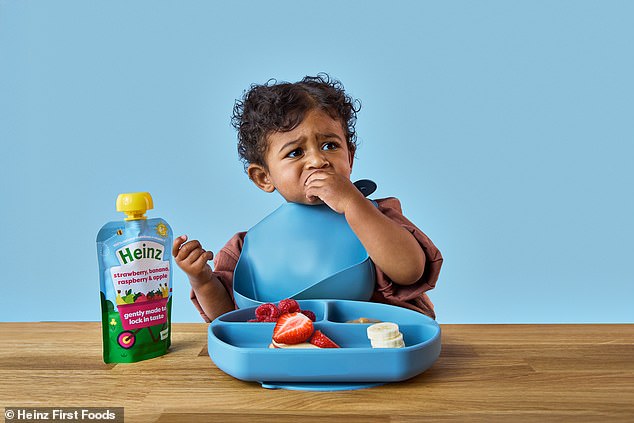
Decoding Toddlers’ Dinner Gestures: Scientists Explain 7 Common Mealtime Behaviors and Meanings
Decoding Your Baby’s Mealtime Cues: What Frowns, Smacks, and Mess Really Mean
For parents, toddler mealtimes can feel like a rollercoaster—one moment joyful, the next chaotic as puree splatters the wall. But experts reveal that seemingly negative behaviors, like frowning or spitting, are often signs of curiosity, not rejection. New research by Heinz and child psychologist Dr. Angharad Rudkin shows nearly half of UK parents struggle to interpret these cues, turning meals into stressful guessing games. Here’s how to decode your little one’s signals.
1. Frowning: The Thinker
Image: A baby scrunches their brow while tasting food.
While adults associate frowns with dislike, babies use exaggerated expressions to process new experiences. “A furrowed brow means they’re exploring a flavor or texture—not rejecting it,” says Dr. Rudkin. Keep offering the food with patience.
2. Lip Smacking: The Food Critic
Image: A toddler smacks their lips loudly.
This noisy gesture is a thumbs-up! Babies use their entire mouth to explore tastes. Lip-smacking signals approval and engagement.
3. Tongue Out: The Explorer
Image: A messy baby sticks out their tongue mid-bite.
Sticky chaos? It’s playtime. Tongue-out antics show curiosity about textures. Let them experiment—it’s how they learn.
4. Spitting Food: The Scientist
Image: A baby gleefully spits peas across the table.
Don’t panic. Spitting helps babies understand textures. “They might even put the food back in,” says Dr. Rudkin. Embrace the mess—it’s a learning phase.
5. Dribbling: The Enthusiast
Image: Drool drips down a baby’s chin.
Excess saliva often means they’re loving the taste! Dribbling is a natural response to deliciousness.
6. Clenched Fists: The Uncomfortable Diner
Image: A baby grips their fists while eyeing broccoli.
Tight fists may signal stress. Offer reassurance through eye contact and calm encouragement.
7. Flailing Arms: The Distressed Diner
Image: A toddler waves arms, sending food flying.
This could mean overstimulation or dislike. Pause, assess their mood, and adjust the meal environment.
Key Takeaways
Dr. Rudkin emphasizes that babies communicate through actions: “Be attentive and enthusiastic—it builds their confidence.” Almudena Rein of Heinz adds, “What looks like rejection is often exploration.” By understanding these cues, parents can transform mealtimes into joyful, stress-free bonding moments.
Answers Recap:
- Frowning = Processing newness.
- Lip-smacking = Enjoyment.
- Tongue-out = Curiosity.
- Spitting = Texture exploration.
- Dribbling = Tasty approval.
- Clenched fists = Discomfort.
- Flailing arms = Overwhelm.
Images and captions adapted from Heinz/Dr. Rudkin’s guide.
Final Tip: Stay patient, keep meals playful, and remember—every messy face is a step toward healthy eating habits!
(Word count: ~600)


